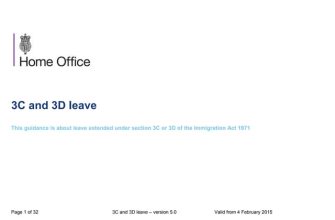Mastering the grievance procedure steps is a crucial aspect of human resource management. It is a systematic approach to resolving employee complaints and grievances, ensuring a harmonious and productive work environment. This definitive HR guide aims to provide a comprehensive understanding of effective complaint management, from identifying the main points of agreed procedures for handling complaints to understanding how long HR has to respond to a complaint. It will also delve into the importance of a well-structured grievance policy, the use of a grievance form template, and the intricacies of a grievance hearing.
Understanding the Grievance Procedure
A grievance procedure is a formal process through which employees can voice their complaints or concerns about their work environment or treatment. It is a critical component of any organization’s HR policy, providing a clear and fair avenue for employees to express their grievances and seek resolution. The grievance procedure steps typically include the filing of a grievance, investigation, grievance hearing, decision, and appeal grievance.
Key Elements of a Grievance Policy
A well-structured grievance policy is essential for effective complaint management. It should clearly outline the steps an employee needs to take to file a grievance, how long HR has to respond to a complaint, and the process for appealing a decision. The policy should also include a grievance form template to streamline the filing process. Here are some key elements to include in your grievance policy:
- Definition of what constitutes a grievance
- Steps for filing a grievance
- Timeframes for each stage of the grievance process
- Details of the grievance hearing process
- Information on how to appeal a grievance decision
- Assurances of confidentiality and non-retaliation
Steps in the Grievance Procedure
The grievance procedure typically follows a step-by-step process, from the initial filing of a grievance to the final decision. Here are the key steps in the grievance procedure:
- Filing a Grievance: The employee submits a formal complaint using a grievance form template. The complaint should clearly state the issue and any supporting evidence.
- Investigation: HR investigates the complaint, gathering all relevant information and interviewing any involved parties.
- Grievance Hearing: A formal meeting is held where the employee can present their case, and the employer can respond.
- Decision: After the hearing, HR makes a decision based on the evidence presented. The decision is communicated to the employee in writing.
- Appeal: If the employee is not satisfied with the decision, they can appeal the grievance. The appeal is usually handled by a higher level of management or an independent third party.
Importance of Handling Grievances Effectively
Handling grievances effectively is crucial for maintaining a positive work environment. It shows employees that their concerns are taken seriously, which can boost morale and productivity. Moreover, it can help identify and address systemic issues within the organization, leading to continuous improvement.
Managing Workplace Grievances
Managing workplace grievances involves more than just following the grievance procedure steps. It requires a proactive approach, including regular communication with employees, training for managers on grievance handling, and a commitment to resolving issues promptly and fairly. Here are some strategies for managing workplace grievances:
- Encourage open communication: Make it easy for employees to voice their concerns and ensure they feel heard.
- Train managers: Provide grievance training for managers so they know how to handle complaints effectively.
- Act promptly: Respond to grievances in a timely manner to show employees that their concerns are taken seriously.
- Follow the procedure: Always follow the agreed-upon grievance procedure to ensure fairness and consistency.
- Keep records: Document all stages of the grievance process, from the initial complaint to the final decision.
Conclusion
Mastering the grievance procedure steps is a vital part of effective HR management. It ensures that employee complaints are handled promptly and fairly, contributing to a positive work environment. By understanding the key elements of a grievance policy, following the grievance procedure steps, and implementing strategies for managing workplace grievances, HR professionals can effectively manage complaints and foster a culture of open communication and respect.







